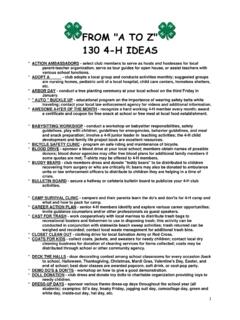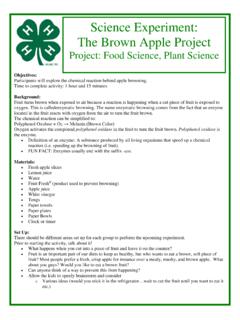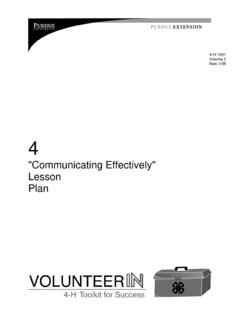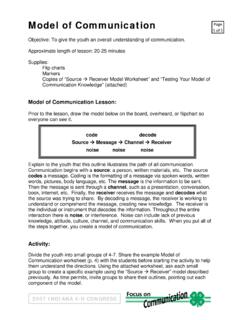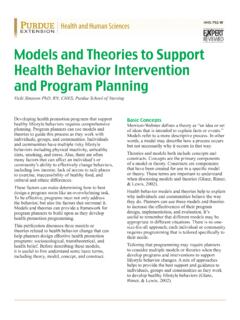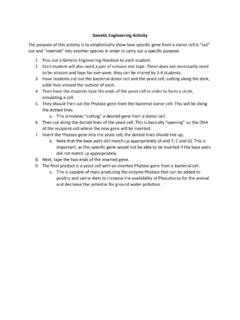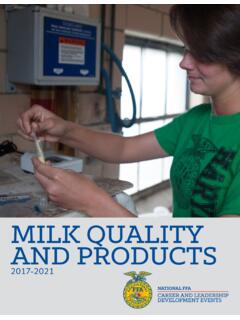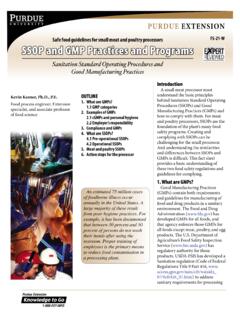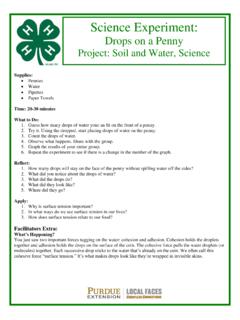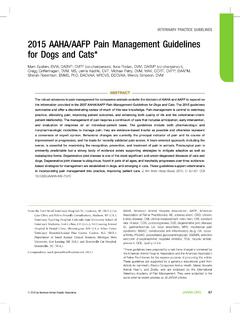Transcription of Implementing Environmental Enrichment for Dogs
1 1 Introduction Environmental enrich-ment is a concept that describes how the environ-ments of captive animals can be changed for the benefit of the inhabitants. It seeks to enhance the quality of animal care by increasing behavioral diversity, reducing the frequency of abnormal behaviors, increasing the range or number of normal behavior patterns, increasing positive utilization of the environment, and increasing the ability of the animal to cope with challenges in a more normal way (Newberry, 1995; Tarou & Bashaw, 2007).
2 Enrichment is important for canine well-being by helping to keep dogs in good physical and psycho-logical condition. For example, dogs housed in barren or boring environments may develop abnormal behaviors as a result of poor coping strategies that include exces-sive licking or chewing of their feet, tails or other body parts. Such behaviors can result in self-injury. Increased or excessive vocalizations, such as barking; manipulation of enclosure barriers; digging or escaping from the yard; repetitive movement behaviors, such as circling or pacing; and coprophagy (eating feces) may also occur.
3 Most of these behaviors are recognized as indicators of chronic stress (Pullen, 2010).Types of enrichmentFive types of Enrichment can be used to enhance an animal s quality of life social, occupational, physical, sensory, and nutritional. Different forms of Enrichment work separately and together to improve the welfare of dogs. For example, low walls or cage furniture give dogs Implementing Environmental Enrichment for DogsVA-13-WMorgan Garvey, Judith Stella and Candace CroneyDepartment of Comparative Pathobiology, College of veterinary Medicine, Purdue UniversityCENTER FOR ANIMAL WELFARE SCIENCE better vantage point to view the surrounding environment.
4 The increased visual access is both physically and visually the environ-ment of dogs in multiple ways stimulates dogs mentally by adding complexity. Social Enrichment refers to the practice of facilitat-ing contact with dogs and other species, especially humans (Young, 2003). This can be done by walking dogs, taking them to dog parks or supervised play groups, and participating in obedience classes. Social Enrichment can even include opting for group housing of compatible dogs, rather than solitary housing. Social living provides a constant source of complex mental stimulation (Humphrey, 1976).
5 Social Enrichment is not to be confused with socialization. Social Enrichment fulfills dogs needs to interact with other dogs and humans through housing and other encounters. Social-ization is a guided and safe exposure to the environment the dog will live in so that he/she learns to be calm when exposed to new things. A well-socialized dog will not become fearful, over-stimulated, or aggressive when exposed to new people, dogs, places, or Enrichment challenges dogs by giving them a job that encourages physical exercise and mental stimulation.
6 While some dogs have a formal job ( service dogs), most dogs can be provided informal forms of occupational Enrichment to keep them men-tally stimulated and prevent or alleviate boredom. Examples of occupational Enrichment include sports 2 Implementing Environmental Enrichment for Dogs fly ball, agility, or playing fetch, which also helps release excess energy and obedience training. Food puzzles provide nutritional Enrichment while requiring dogs to think and work to get the treat out from the puzzle s interior.
7 Physical Enrichment includes altering the quality and complexity of the dog s living space. Providing toys is one of the most common ways people attempt to enrich dogs environments. Interaction with toys may decrease a dog s response to Environmental factors ( noise, strange people or dogs) and decrease arousal and related behaviors, such as excessive barking, digging, trying to escape and destroying property (Mason et al., 2007). However, toys must be carefully selected to be safe and of interest to dogs, and typically, toys should be rotated to maintain the effect of being enriching to dogs.
8 A ball, for instance, may trigger interest in some dogs but not others. However, constantly providing the same ball and nothing else may result in waning interest over time. Ideally, one should not remove toys that remain enrich-ing to dogs, but it is often a good idea to have a selec-tion of preferred toys and alternate their use (Tarou & Bashaw, 2007). In cases where maintaining the cleanli-ness and presence of the toy in a kennel is a priority, toys should be chosen that can be presented not just on the floor, but safely attached to cage doors or other structures on which the dogs cannot get entangled or injured.
9 One should also take into consideration the ability to sanitize toys to maintain the health of addition to toys, adding physical features to a pen, run or kennel can increase the complexity of the envi-ronment. Forms of physical Enrichment for kenneled dogs include beds to sleep on (alternatives may be needed for dogs that eat or destroy their beds), a raised platform, or doors that allow the choice of being in-doors or outdoors (Hubrect, 1993). These features provide dogs with more control over their social and physical environment, and depending on what is chosen, a more comfortable place to rest, a better view of their surroundings, access to outdoors, or a place to hide if frightened.
10 Physical enrichments should provide outlets for positive expression of natural behaviors. For example, providing terriers with sandboxes in outdoor areas may allow them to engage in normal digging behavior in a manner that is not destructive to property and therefore more acceptable to their owners or care-takers. Sensory Enrichment can be used to stimulate the different senses of dogs, such as sight, sound or smell. Visual Enrichment includes both stationary and moving visual images being able to see inside or outside their environment, for example.
